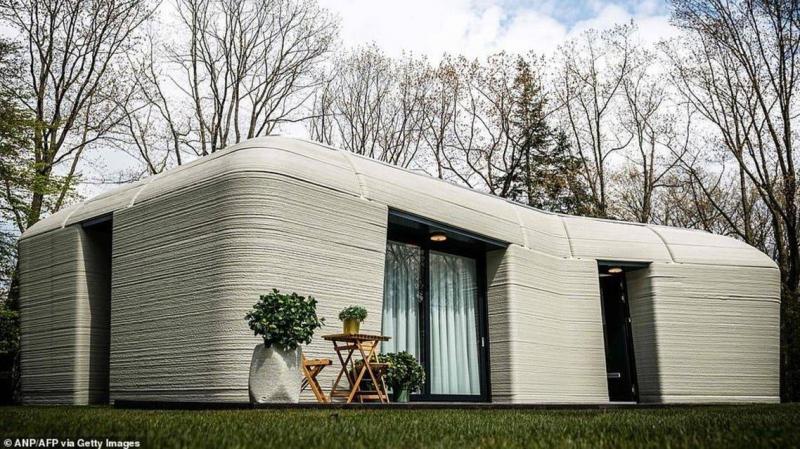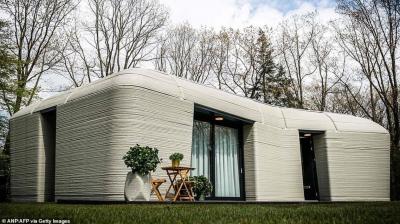A Dutch couple has moved into the first house built with 3D printing technology in Europe, which developers claim can be constructed from scratch in just five days. Retirees Elise Lutz, 70, and her husband Harry Dekkers, 67, are relocating to their new 94-square-meter home, which resembles a rock with windows, located in the Dutch city of Eindhoven.
Despite the curved lines of the gray concrete walls that appear natural, they are actually the result of advanced housing construction technology in the Netherlands and around the world, having been printed using a 3D printer at a nearby factory. The couple will rent the home for six months at a rate of $960 per month, describing it as "special and different," according to the Daily Mail.
Currently, the house looks unusual, with printed concrete layers clearly visible, including some imperfections caused by printing issues. However, in the future, as the Netherlands seeks ways to address its chronic housing shortage, such constructions could become commonplace. The country needs to build hundreds of thousands of new homes this decade to accommodate a growing population.
Theo Salt, a professor at Eindhoven University of Technology, works in the field of 3D printing, also known as additive manufacturing, to find ways to make concrete construction more sustainable. Salt believes that it is possible to print 3D houses in the future using 30% less material. He attributes the potential of 3D printing to create more sustainable and material-efficient building models to its ability to use less concrete and better customize materials without wasting any.
The house consists of 24 concrete pieces that were assembled together, printed by a machine that layers concrete one on top of another before adding finishing touches, such as the roof. The layers give a textured appearance to the walls both inside and outside.
The house, a product of collaboration between the city council, Eindhoven University of Technology, and construction companies, is called "Project Milestone" and complies with all Dutch building regulations. The printing process took only 120 hours. The alliance plans to build five houses and develop their techniques with each one, and future homes will be multi-story.
Salt hopes that such houses, which are constructed faster than traditional homes and use less concrete, could help solve the housing shortage issue in a country of 17 million people that is continuing to grow.
According to a report released this month, the Dutch Environmental Assessment Agency has stated that education and innovation could stimulate the construction industry in the long term, but other measures are needed to address the Dutch housing shortage, including zoning reforms.
Salt believes that 3D printing could assist by digitizing the design and production of homes. He stated, "If you ask me, will we build a million homes, as you see here? The answer is no. But will we use this technology as part of other homes combined with wooden structures or integrated with other materials? Then my answer is yes."
The printed house provides a high degree of insulation according to new resident Dekkers, thanks to the soundproof and heat-resistant inner layers of the concrete walls. Dekkers added, "It gives a very good feeling because when you are inside, you do not hear anything from outside."
For his part, the CEO of construction company Weber Benelux, Bas Heismans, stated, "If we had printed all the parts at once, it would have taken less than five days because the great advantage of 3D printing in the construction process is that it doesn't need to eat, sleep, or rest."




